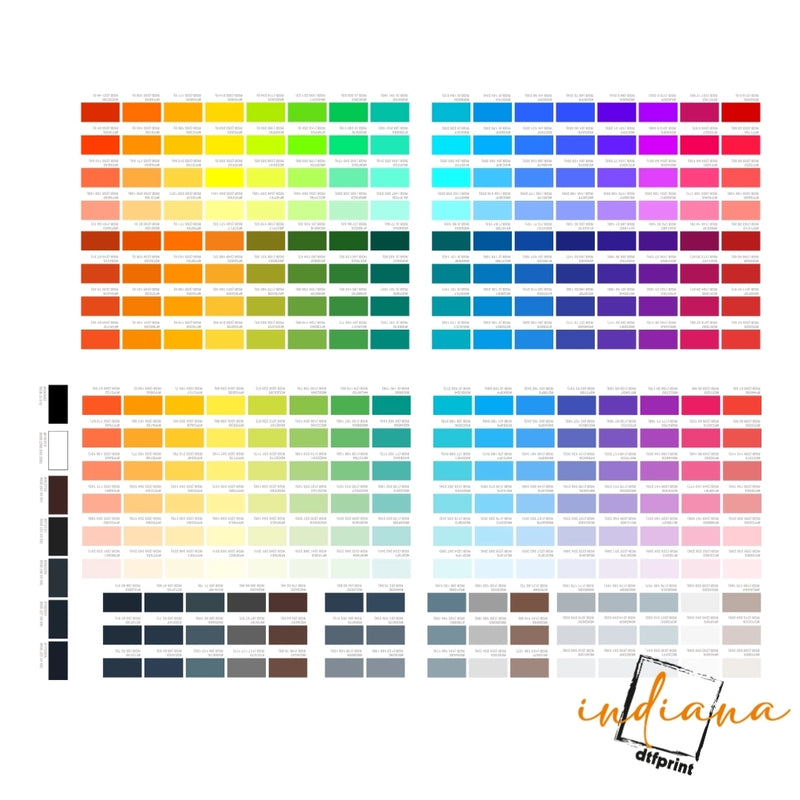The fashion industry has always demanded perfection. From runway looks to retail shelves, every piece of clothing must meet high expectations. When it comes to prints, the bar is even higher. This is where DTF printing best practices come into play. With the right methods, DTF can deliver results sharp enough for luxury brands.
In this blog, we’ll cover how to ensure every print matches high-end fashion DTF printing standards. These procedures will assist you in achieving reliable, superior outcomes, regardless of the size of your design business or apparel line.
Why Quality Matters in Fashion Printing
Fashion isn’t only about fabric; it’s also about the specifics. Our customers want clean lines, bold colors, and prints that feel as great as they look. When you follow best practices for DTF printing, your designs won’t just look good on day one. But they’ll continue to pop and last.
The secret is to create premium and durable DTF transfers for apparel that will last regular washings, stretchings, and wear and tear while consistently reflecting the sophistication and detail demanded by high-end fashion.
High-Resolution DTF Printing
Clarity is key in high-resolution DTF printing. High end brands often use intricate patterns, logos, and typography. Even the smallest detail must be captured. Always work with high resolution files and maintain print file resolution to avoid blurred or pixelated results.
Investing in modern printers designed for digital textile printing for fashion helps ensure every element is crisp and aligned with industry standards.
File Preparation for Fashion Prints
The print is only as good as the file. File prep for DTF fashion prints is a step that should never be rushed. Check that files are in the right format, colors are properly managed, and resolution is set for large scale clarity.
Test printing before production is another key step. Running a small test ensures your artwork looks exactly as expected before starting a big batch. This avoids wasted fabric and costly errors.
Mastering Color Management
Luxury brands are very strict about color. A shade that is even slightly off can ruin an entire collection. This makes color management DTF fashion one of the most critical practices.
Calibrate printers regularly and match colors to Pantone standards where possible. This guarantees your high-end fashion DTF printing will look consistent across all garments in a collection.
The Role of the White Underbase
For bold and vibrant results, always use a white underbase in DTF. This layer ensures colors don’t look dull on darker fabrics. Without it, even a perfect design can look washed out.
The thickness of the underbase must also be controlled. Too heavy, and it makes the fabric stiff. Too light, and the colors won’t pop. Getting this balance right is part of true DTF printing best practices.
Fabric Compatibility and Testing
Not all fabrics react the same way to DTF. Fabric compatibility for DTF should always be checked before production. Polyester, cotton, and mixes require slightly different handling.
You may observe the durability of colors, textures, and finishes by experimenting with various materials. This stage guarantees that your long-lasting DTF transfers for clothing satisfy exacting fashion requirements for all kinds of fabric.
Curing and Post Press Steps
A print isn’t finished once it’s pressed. Curing and post-press in DTF are vital to lock in durability. Prints that are properly cured won't peel, fade, or split after washing.
Using top-notch curing equipment that keeps up with production speed yields the greatest results. This stage distinguishes regular prints from the high-quality, long-lasting outcomes required for fashion digital textile printing.
Balancing Quality and Efficiency
Luxury fashion doesn’t compromise on quality, but it also needs efficiency. That’s why balancing speed with accuracy is essential. Following the best practices for DTF printing helps brands maintain high standards while still meeting tight deadlines.
The right equipment, combined with disciplined workflows, ensures that both boutique runs and large scale orders achieve consistent quality.
Conclusion
Error is not tolerated in the fashion industry. Brands need to concentrate on accuracy, robustness, and consistency in order to satisfy the expectations of high-end fashion DTF printing. Every stage contributes to the creation of runway-ready products, from file preparation for DTF fashion prints to curing and post-press in DTF.
If you want to ensure your prints meet the highest fashion standards, the right partner can make all the difference. Explore professional grade solutions at Indiana DTF Print and take your apparel printing to the next level.
FAQs
1. What makes DTF printing suitable for high end fashion?
DTF works well for fashion because it produces sharp, vibrant, and durable prints. By following DTF printing best practices, designers can achieve results that match luxury fashion standards.
2. Why is a white underbase important in DTF?
A white underbase in DTF creates a base layer that makes colors pop, especially on dark fabrics. It ensures the final print looks bold, sharp, and professional.
3. How do I prepare files for DTF fashion prints?
Use high resolution files and check color formats. Always maintain print file resolution and run test printing before production to confirm designs look sharp before printing in bulk.
4. What fabrics work best with DTF printing?
DTF works on cotton, polyester, and blends. Always check fabric compatibility for DTF before large runs to ensure colors stay accurate and prints remain durable after washing.
5. What’s the role of curing in DTF printing?
Curing and post-press in DTF help set the print into the fabric. This makes the design long lasting, resistant to fading, and strong enough to handle regular wear and washing.











